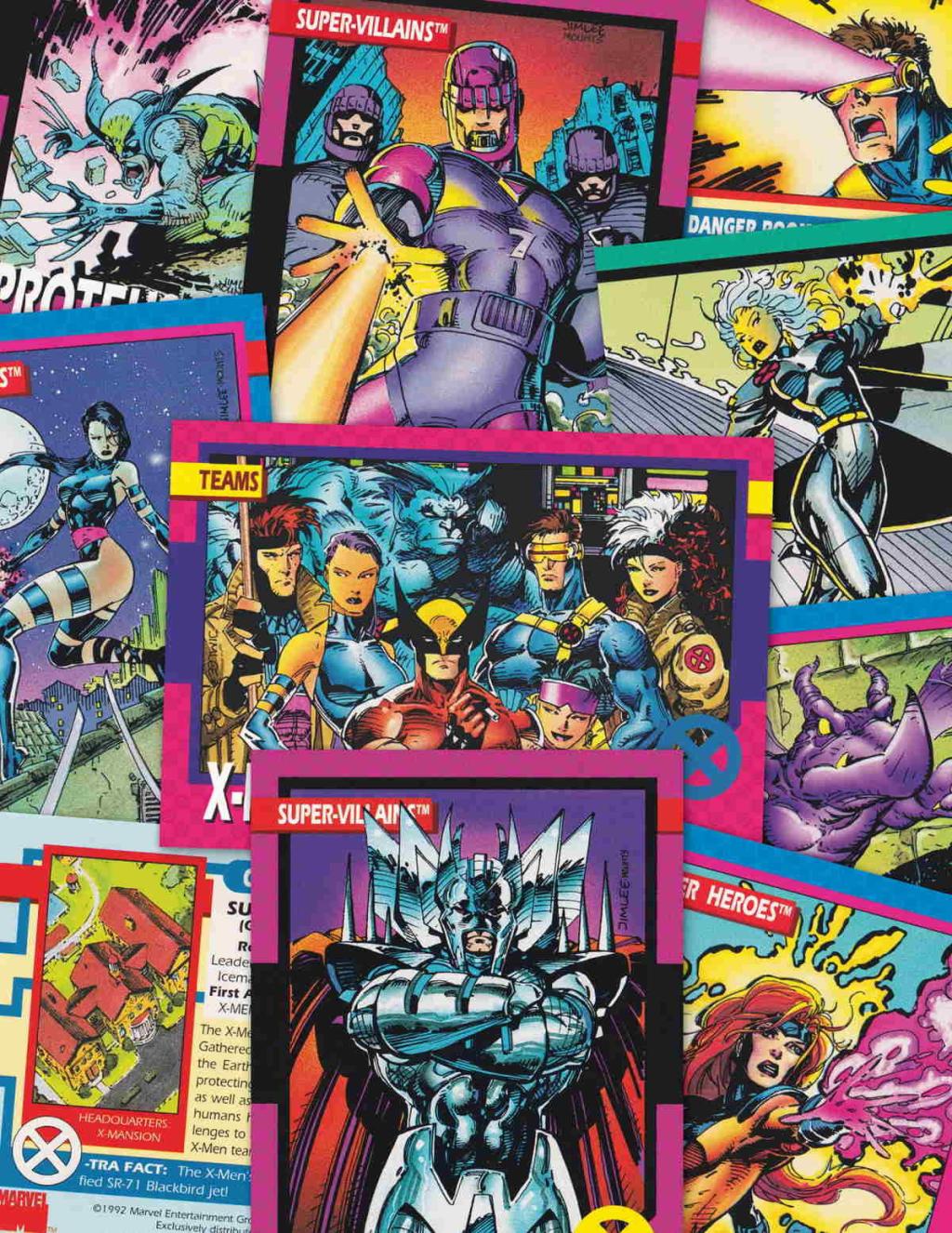The 1990s were huge for the X-Men. The growing family of X-Men comics was selling better than ever. X-Men: The Animated Series. A third and often overlooked pillar of the 1990s X-Men boom is the trading card sets that featured the characters. These cards often served as singular, iconic representations of the characters, providing stunning visuals and new information about the characters to fans who weren’t necessarily digging through back issue bins to uncover every moment in X-Men history. Plenty of young people in the 1990s spent their allowances filling up binders full of these card sets.
Videos by ComicBook.com
Jim Lee was the connective tissue between the X-Men comics, The Animated Series, and the trading cards. Lee drew the record-breaking X-Men #1, and his character designs are the basis for the X-Men’s looks in X-Men: The Animated Series. Those designs were on full display in The Uncanny X-Men Series 1 trading card set released in 1992, which was the first Marvel trading card set entirely drawn by a single artist. The 105-card collection featured iconic X-Men characters like Wolverine and Cyclops, alongside others that have since faded into the background, such as Widget and Kylun, all drawn in Lee’s signature style. Lee’s artwork here — repurposed on multiple occasions for various licensed Marvel products — is of note to collectors and fans because it’s a rare instance of Lee inking his own work instead of relying on a dedicated inker like frequent collaborator Scott Williams.

The Uncanny X-Men Trading Cards: The Complete Series, celebrating the 30th anniversary of the cards’ original release, collects every card in the set, front and back, in a single volume, allowing fans to take in the artwork featured on one side and peruse the character profiles and stats on the back. Before that, the foreword by Ed Piskor, the cartoonist who created , sets the stage, reminding readers of what it was like to be an X-Men fan in the 1990s. Bob Budiansky, the Marvel editor who oversaw the card set, then provides an introduction walking fans through the set’s creation, from production to release and lasting impact.
Budiansky, fellow editor Tom Brevoort, Paul Mounts, the colorist who worked on the set, and a couple of other people involved provide additional commentary on some of the cards in the book. While Budiansky and Brevoort’s commentary offers some fun trivia, Mount’s explanation of what went into coloring Lee’s work shines brightest. Mount colored Lee’s linework and often created backgrounds whole cloth to place behind Lee’s figures. His commentary offers insight into the hard work, skill, creativity, and resourcefulness he brought to the cards, offering a whole new level of appreciation for the artwork. It’s a shame that Lee didn’t provide commentary, but that’s not surprising as he is well ensconced in Marvel’s “distinguished competition” these days.
Abrams ComicArts includes a couple of fun extras with The Uncanny X-Men Trading Cards: The Complete Series. The book comes with four new promotional cards. One is a single card featuring the complete artwork used for the nine connecting Danger Room cards in the set, which collectors could piece together by placing the nine cards into a nine-card binder page. The other three cards recreate Lee’s connecting covers to the record-setting X-Men #1. It’s a nice bonus that collectors of the original set might want to add to their personal binders. Lastly, the reverse side of the book’s dustcover features Lee’s iconic poster art featuring most of the characters starring in X-Men and its related titles at the time. The artwork is as stunning today as it was then, even in this miniaturized form, and makes for a nice pinup piece for those who don’t mind losing the dustcover (the cover itself, featuring Lee’s Wolverine, looks stellar).
The Uncanny X-Men Trading Cards: The Complete Series is a fun, nostalgic trip down memory lane. And as a bonus, getting a copy for your bookshelf should be much easier than tracking down a set of this essential piece of X-Men history on the secondary market. The book goes on sale on August 9th.








